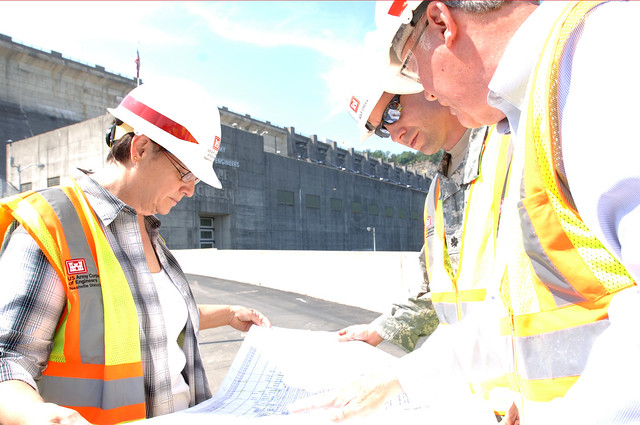Introduction
We receive dozens, probably closer to a hundred commissioning requests for proposals (RFPs) every year. The quality, content and requirements are as varied as one might expect. Jennifer Chiodo posted some thoughts on how one can identify quality commissioning services and I’d like to take this opportunity to suggest how one might develop an RFP for commissioning services.
Content
The California Commissioning Collaborative, Building Commissioning Association and ASHRAE all have templates you can use for commissioning RFPs. When developing your RFP, it is important to read through the templates and require only the services you need. I suggest including a “second tier” of services, those which could be beneficial or fill a need your facility might have but are not essential to your project.
 Photo by Flickr user Judy **
Photo by Flickr user Judy **How are you to know that your RFP will elicit proposals that are complete and offer the best package of services for your project? My suggestion is ask a commissioning provider to help you. Architects and engineers typically have an idea of what commissioning is and some have a very good idea. I’ve seen RFPs however, even from the latter group, that ask for tasks and services that don’t offer the best value to the owner. In addition, they often miss opportunities to add value at minimal additional cost. A commissioning provider will typically be in the best position to advise you on what content and services required by your RFP will best serve your particular project.
Examples
- Terminal Device Sampling
- A terminal device is simply anything that delivers heating or cooling to a space. It could be a VAV box, a radiator, a heat pump, etc. A very effective means of reviewing the installation and operation of similar terminal devices is to use statistical sampling. Rather than visit each and every of the 45 VAV boxes in an office fit up, for instance, a statistical sample will identify the lion’s share of any installation and operational issues. If sampled early enough, the installing contractor can correct any identified issues and won’t repeat them going forward.
- I have seen a number of commissioning RFPs ask for “full commissioning” of all such devices. While this approach is certainly valid for critical components, it adds unnecessary cost to the commissioning contract in most cases.
- Sampling or “first instance testing” is common practice among MEP systems commissioning providers, as well as building enclosure commissioning providers, simply because it works and offers a best-value solution.
 Photo by Flickr user NashvilleCorps
Photo by Flickr user NashvilleCorps
- Construction Phase Only Commissioning
- Excluding any commissioning design phase involvement can seem like a financially prudent move. After all, your design team knows what they’re doing so why do you need to pay for a design review? Our firm’s Principal Emeritus, Tom Anderson, wrote about this in some detail so I won’t repeat it here, but in essence it comes down to the value that varied perspectives and experiences can bring to a project.
- The cost of a comprehensive review will vary depending on the size and scope of a project, but in general the cost will be between $3,000 and $6,000. While this is no drop in the bucket, it isn’t a running faucet either! Consider these two recent examples where a review resulted in first cost and energy cost savings that well eclipsed the cost of the review.
- Recently, on two separate projects we suggested obtaining pricing from alternate manufacturers. On one, where it was on rooftop air handling unit (RTU), the savings was $10,000 in first cost, combined with established, local representation. On the other, the entire building’s HVAC system and components were sent out for budget pricing and the budget from a manufacturer with an equivalent product line identified the possibility of over $100,000 in first cost savings. Both paid for our review fees more than twice over (the latter, if realized during the bid process, will pay for our entire commissioning fee almost twice).
- We consistently identify efficiency opportunities that save energy, often resulting in cost savings to the owner that pay for our review fee in less than one year. In Tom’s post noted above, he used the example of a pump. On a recent project, where the design team included constant speed pumps (which met code) we suggested a change to variable speed pumping for all the reasons Tom noted. The suggestion was accepted, and once balanced, the pumps drew 9.9 amps to meet the balanced pressure differential set point even though they were designed to draw 27 amps. These are 24/7 pumps, wired at 460 volts. Doing the math, the annual operational savings is almost 120,000 kWh equal to over $14,000 per year. One measure that paid for our review fee 2 1/2 times over in the first year.
Conclusion
When developing your RFP for commissioning services, consult with a commissioning provider you trust. If you don’t know one, ask your A/E team for a few names and talk to them first. Having firsthand, practical knowledge of the process of commissioning and the ability to walk you through the potential benefits of each step will allow you to write an informed, meaningful RFP that you can be sure will meet the needs of your project without excessive scope and the associated excessive fees.


